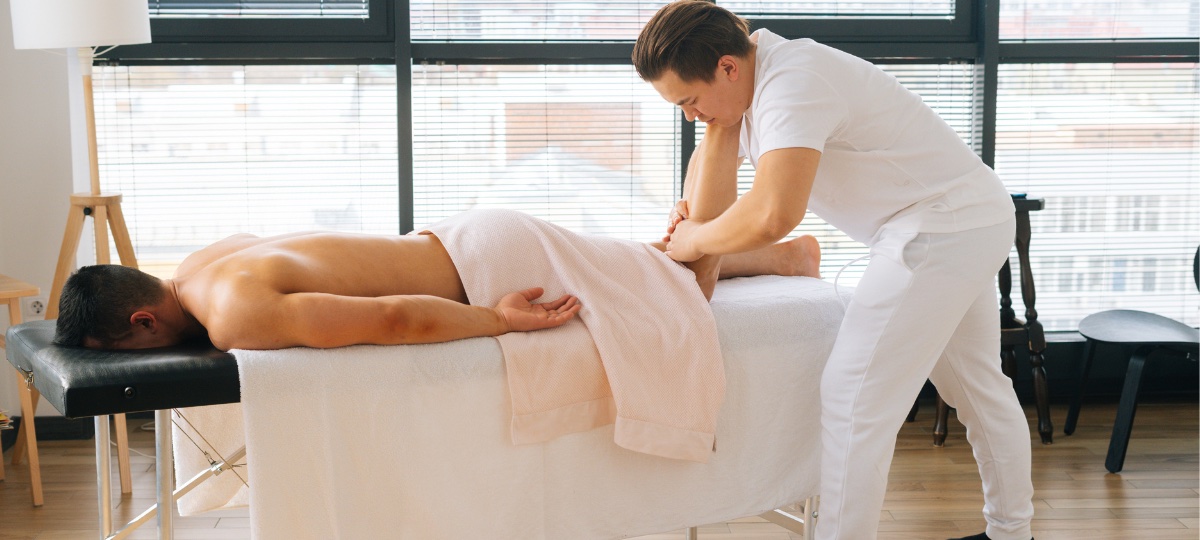No. 1: Use Your Forearms
Start every massage session from the assumption that your fingers should only be doing the delicate massage work, like around a client’s face, head, hands and toes. For the bigger areas of your client’s body, look to your forearms, for example, where you can get a sturdy base when leaning into a client’s tissue while still providing smooth and comfortable contact. You save the more delicate joints in your hands and fingers from unneeded wear and tear, which can help with career longevity.
No. 2: Stretch First, Massage Second
For clients who have pain that may be rooted in muscle tightness, placing a tight muscle in a position that stretches it before massaging can benefit both you and the client by helping intensify the work you do on the muscle without adding to your workload. For clients, tightness can be the symptom of pain, not the cause, and these areas may be especially sensitive, requiring a lighter touch and less pressure.
No. 3: Relax
Relaxation is not just for massage clients. Try relaxing the muscles you are not actively using to perform massage, as doing so can help you conserve energy and provide the client with the same benefits but without the strain on your own body. If you have trouble with this practice, try to consciously deepen your breath.
Fun fact: According to the Canadian Lung Association, we breathe in and out approximately 22,000 times per day, and our brain controls how fast our lungs draw in air.
No. 4: Use Your Legs
Saving energy and preventing injury via paying close attention to massage techniques and how they’re performed doesn’t mean the focus should only be on your arms and hands. Massage therapists also need to consider how their legs can help.
Use a wide stance when you can, which will allow you to work across your client’s body and move your whole body with each massage stroke. In this way, massage therapists can use their body weight to create pressure.
